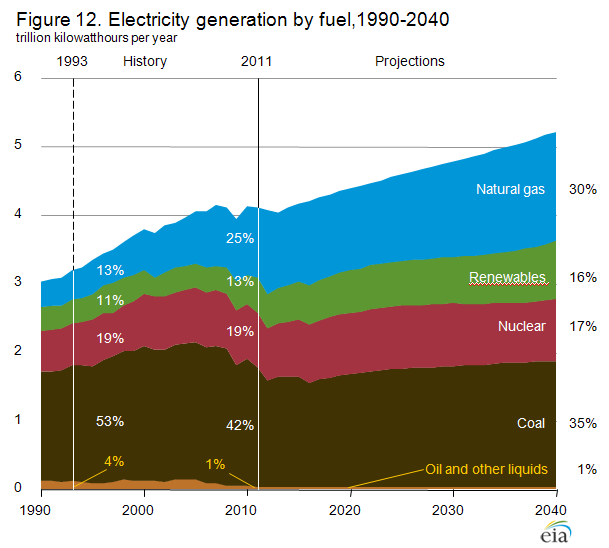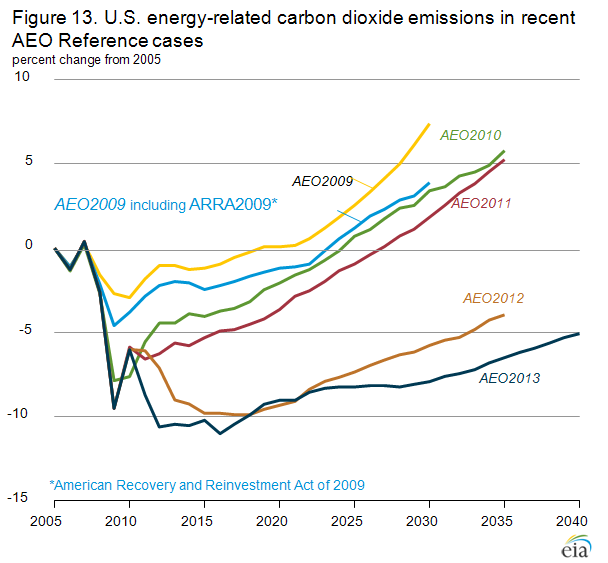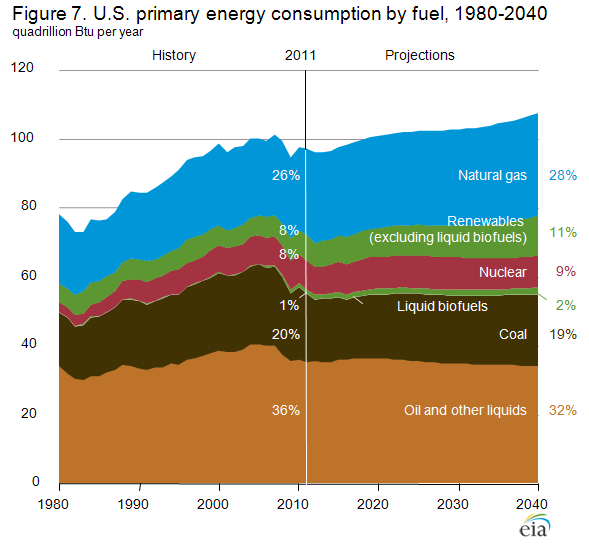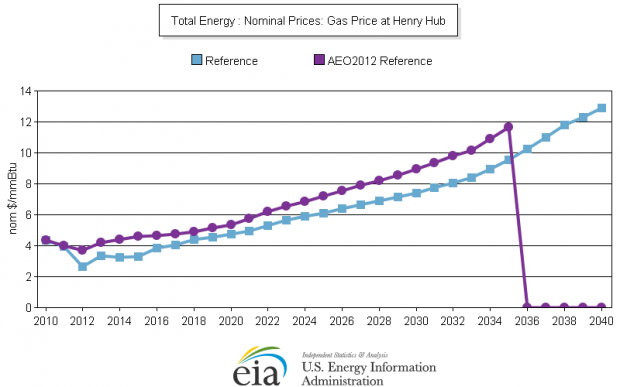The Energy Information Administration's New Report, In Four Charts
The analysts at the United States Energy Information Administration released their preliminary annual report on energy use Wednesday afternoon. (The full document won’t come out until early next year.)
The forecast aims to predict domestic energy production, use and cost over the next three decades. What’s it say? Here are some highlights from in four easy-to-understand charts.
More Natural Gas – and Less Coal – Will Fuel Power Plants. In 2040, the EIA predicts coal will still be the country’s primary source for generating power. But the gap between coal and natural gas will significantly shrink. Right now, natural gas accounts for about a quarter of energy production, while coal generates 42 percent of power. The EIA expects a steady increase in natural gas-fired power plants will narrow that gap to just five percentage points.

U.S. Energy Information Administration
Carbon Dioxide Emissions Will Keep Dropping. The shift from coal to natural gas power, combined with tighter auto emission standards, will lead to a decrease in CO2 emissions, according to the EIA report. Compare the 2013 findings to previous years – you can see the EIA grows increasingly optimistic about a decline in greenhouse gas emissions.

U.S. Energy Information Administration
More Renewables, Less Oil. Looking at overall energy consumption, the EIA expects renewable energy use to increase, but predicts a flatline in biofuels consumption. Oil consumption decreases, as does coal, though the coal drop is marginal, compared to the drop predicted in energy generation.

Source: U.S. Energy Information Administration
Natural Gas Prices Stay Low Through 2020. The domestic shale boom’s impact on natural gas prices has been well-documented. The domestic supply glut has led to a ten-year low in natural gas prices. The EIA expects the price of gas to hover below $4 per thousand cubic feet until around 2020. After that, the agency predicts a steady increase, due to more domestic demand, and the fact drillers will begin shifting to less productive shale plays. The EIA predicts gas will be valued at $5.40 in 2030, and $7.83 in 2040. Note that these estimates are lower than last year’s report. (The 2012 predictions drop to 0 at the end because they only went through 2036.)

Source: U.S. Energy Information Administration
















